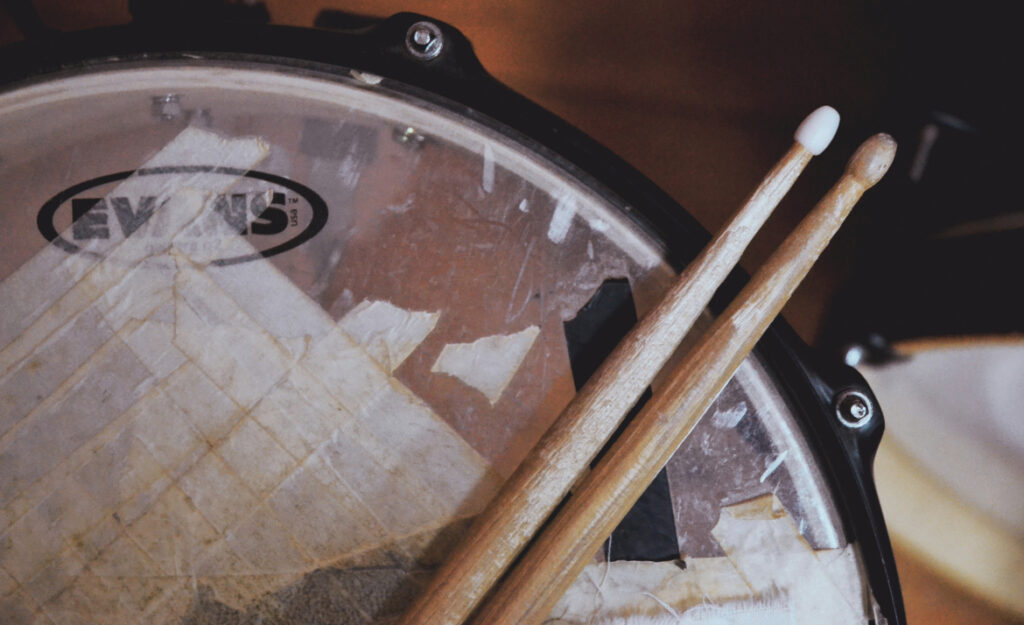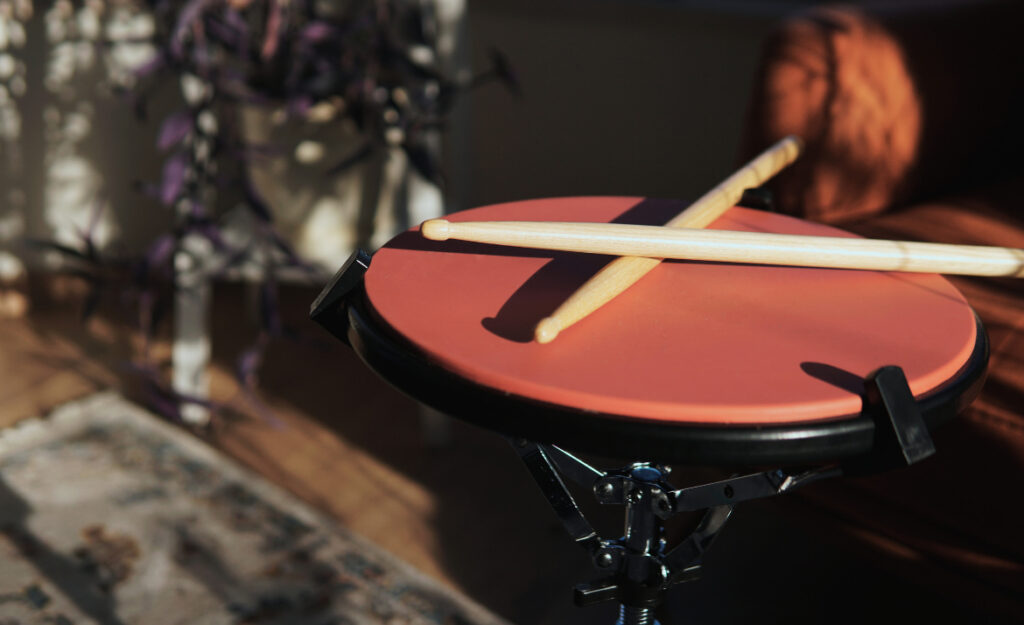Small shifts in daily drum routines can spark huge leaps in skill. When drummers choose consistent practice habits, new grooves start clicking and the metronome transforms from adversary to trusted coach.
If showers of stick clicks echo through your room but progress feels stuck, you’re not alone. Simple routine tweaks can quickly add up and unlock breakthroughs without overwhelming effort.
This article covers proven strategies that help drummers build, refine, and sustain practice habits that genuinely deliver measurable results. Let’s dive into actionable methods to take your drumming to the next level.

Building Deliberate Practice into Each Session
Every drummer who commits to intentional, goal-focused sessions sees bigger improvements. Deliberate practice drives skill, so vague playing must become a thing of the past.
Rather than just ‘playing through’ favorite songs, create targeted goals for each practice block. Write down one technical aspect to fix, like single-stroke rolls at 120 BPM, and stick with it for at least ten focused minutes.
Breaking Down Complex Patterns for Mastery
Complex fills can stifle progress if you always rush the tempo. To break the cycle, try this: slow the pattern to half speed and vocalize each stroke.
A drummer, for example, might count aloud: “Right, left, kick, rest” to lock down tricky coordination. After internalizing at slow tempo, gradually speed up while keeping accuracy high.
If mistakes show up, treat them as catches in a fishing net—each snare means a new opportunity. Loop that one bar until the movement feels natural before returning to the full phrase.
Tracking Progress with Written Logs
Maintaining a notebook or digital log keeps your ‘why’ front and center. After every session, record the exercises practiced, tempos reached, and what felt challenging to boost your practice habits.
Looking back on your notes at the end of each week, you’ll spot patterns: were flams the repeated struggle, or did the metronome jump break down at 140 BPM?
Write actionable notes like, “Hands tensed up after 2 minutes at 130 BPM—next time: pause at 90 seconds, relax, and restart.” These details add up to smarter, tailored sessions.
Bite-Sized Goals Move Mountains
Large ambitions like ‘get faster hands’ often lead to frustration. Set micro-goals—”add 2 BPM to double strokes”—so progress is easy to spot and celebrate.
At the start of your session, jot a micro-goal on a sticky note: “crisp hi-hats for eight bars.” This gives the brain closure and triggers dopamine each time you complete it.
Stacking small wins builds discipline and momentum, making even tough grooves feel like stepping stones instead of walls.
| Practice Habit | Action | Outcome | Next Step |
|---|---|---|---|
| Timer-Set Sessions | Use a timer for each exercise | Boosts focus; limits distraction | Start with 10-minute intervals |
| Progress Logging | Write post-session notes | Tracks improvement & challenges | Review notes weekly for trends |
| Slow-Tempo Drills | Halve the speed, count aloud | Locks in technique early | Increase tempo only when clean |
| Video Feedback | Record then review yourself | Identifies hidden errors | Note 1 fix per review |
| Micro-Goals | Break big goals into tiny wins | Makes results visible | Celebrate completion each time |

Practice Without a Kit Using Everyday Household Objects
Unlock drumming skills at home with everyday items.Practice Habits and Routine to Cement Progress
A structured routine separates casual drummers from players who improve every week. Make every minute count by locking in a repeatable schedule.
Create a sequence you follow each session—warm-up, challenge drill, songwork, cooldown—so your brain and body slip into a learning groove. Structure minimizes wasted time and boosts recall session after session.
Establishing a Weekly Practice Framework
A template routine yields steady progress, even when life gets busy. Slot in 5–10 minutes of single-stroke roll warmups, daily coordination drills, and specific song goals.
- Begin with a non-negotiable five-minute warm-up, even if you’re busy—this gradually expands practice stamina.
- Label blocks with exact tasks: “Sixteenth notes at 100 BPM, right hand lead—2 rounds,” so there’s never confusion about what to practice.
- Add brief log entries between blocks stating what improved and what stalled; these cues fine-tune tomorrow’s routine.
- Stick to a regular time slot (before dinner, late morning, etc.), so habit forms automatically, like brushing teeth.
- Finish with five minutes of relaxed, unstructured playing—this makes practice rewarding and playful, fueling enthusiasm.
Documenting your plan fosters a sense of purpose. Write tomorrow’s sequence on a sticky note so your brain’s primed to follow through.
Swapping Passive For Active Practice Modes
Replace aimless jamming with exercises based on concrete feedback. Try “film your hands, spot what feels stiff, adjust your grip next round.” Immediate adjustment beats hours of repetition.
- Film yourself playing a groove, then spot-check hand motion for tension or unwanted bounce.
- After self-review, replay the groove and adjust only the sticking, watching for visible improvements.
- Compare video side-by-side for before/after assessment—corrections stick better when you see proof.
- Create a checklist: “shoulders relaxed, wrists loose, even stick heights,” and inspect the video for each item.
- If feedback reveals clichés—like drifting tempo—pause, review with a metronome, and mark as tackled.
Each review loop closes with one actionable tweak, sharpening the accuracy of your future sessions.
Making Every Minute Count: Intensity Over Duration
Five tightly focused minutes can drive more drummer growth than half-hearted hours behind the kit. Practice habits thrive on intensity, not just time spent.
Set a timer for your most challenging exercise—such as 10 minutes of double pedal footwork. Strive for maximum attention in that window, ears glued to tone and attack.

The Power of Full Engagement
Giving everything to a short stretch of practice—no distractions, just stick, drum, and your metronome—cements progress like nothing else. During those moments, sound shape and posture change for the better.
For example, a drummer might close their eyes during slow paradiddles, feeling the stick rebound and noting any unevenness by sound alone.
Deep, undistracted focus for ten minutes, followed by a five-minute break, builds up mental stamina, fueling better learning and muscle memory for future sessions.
Segmenting Sessions for Maximum Focus
Divide a practice hour into three or four focused segments. Assign each ten to fifteen minutes: technique drills, limb independence, rudiment exploration, then groove application with a song or track.
This structure keeps enthusiasm high, prevents boredom, and ensures all areas of your drumming stay in balance. You’ll notice faster, well-rounded skill growth compared to sessions that drag on in a single focus zone.
A drummer might say, “First, doubles at 90 BPM; next, alternate between hi-hat rhythms and foot patterns; finally, groove through a favorite chorus, searching for tightness.” This variety builds mastery and prevents skill plateaus.



